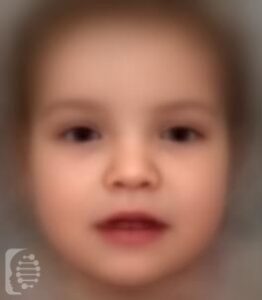What is Joubert syndrome?
Joubert syndrome is a rare disease that affects multiple parts of the body. The symptoms and features of the syndrome vary widely between individuals, and may even differ between affected individuals in the same family.
It is a genetic syndrome that affects brain development primarily. But it also affects multiple parts of the brain. The two main brain abnormalities associated with the syndrome are an absent or underdeveloped cerebellar vermis (the part of the brain that controls balance and coordination), and a malformed brain stem (this is what connects the brain and the spinal cord).
What gene change causes Joubert syndrome?
There are many genes associated with causing the syndrome, and around 43 have been described. And more that are not yet identified. It is inherited in all forms of inheritance, autosomal and X-linked.
What are the main symptoms of Joubert syndrome?
- Hypotonia, or low muscle tone, is a main symptom that presents in infancy. Ataxia, an issue with the coordination of movements is also present. In very early infancy, before six months, issues with breathing are common with the syndrome.
- Ocular Motor apraxia, the inability to move the eyes from side to side, has been reported as occurring with the syndrome.
- Mild to severe intellectual disability is another symptom and usually affects the language and motor skills of an affected individual.
- Unique facial features of the syndrome include widely spaced eyes and droopy eyelids, arched eyebrows, a broad forehead, low-set ears and a triangular-shaped mouth.
Possible clinical traits/features:
Motor delay, Oculomotor apraxia, Enlarged fossa interpeduncularis, Stage 5 chronic kidney disease, Epicanthus, Abnormal electroretinogram, Intellectual disability, Anteverted nares, Nephronophthisis, Neonatal breathing dysregulation, Muscular hypotonia, Molar tooth sign on MRI, Low-set ears, Pigmentary retinopathy, Autosomal recessive inheritance, Open mouth, Nystagmus, Cerebellar vermis hypoplasia, Ataxia, Retinal dystrophy, Central apnea, Wide nasal bridge, Episodic tachypnea, Heterogeneous, Elongated superior cerebellar peduncle, Ptosis, Highly arched eyebrow, Visual impairment.
How is it diagnosed?
To find out if someone has a diagnosis of Joubert syndrome, it is important to have a consultation and evaluation with a clinical genetic specialist. Specialists may also suggest specific genetic testing or other types of tests to help reach a diagnosis. FDNA’s AI technology can help speed up the diagnostic process by analyzing facial features and other health information.


